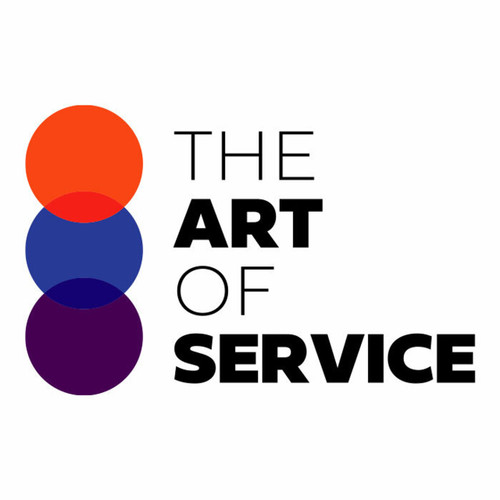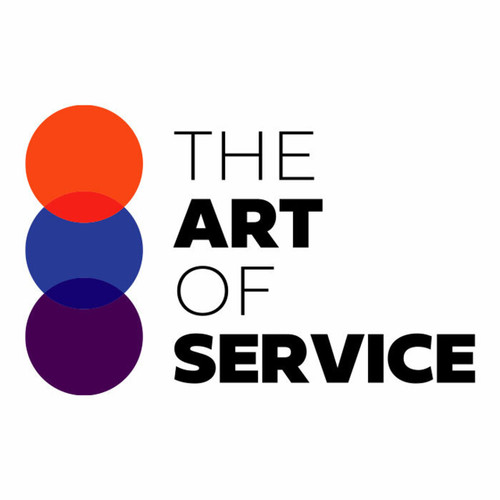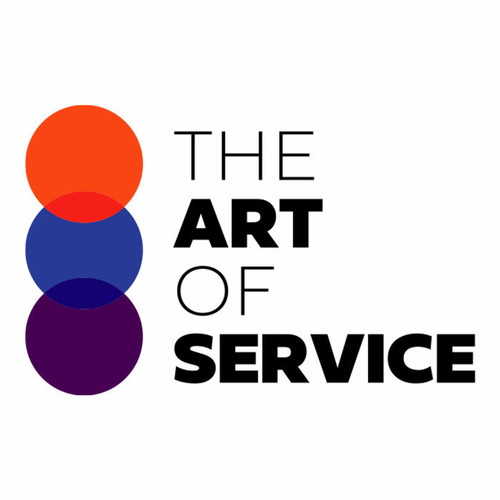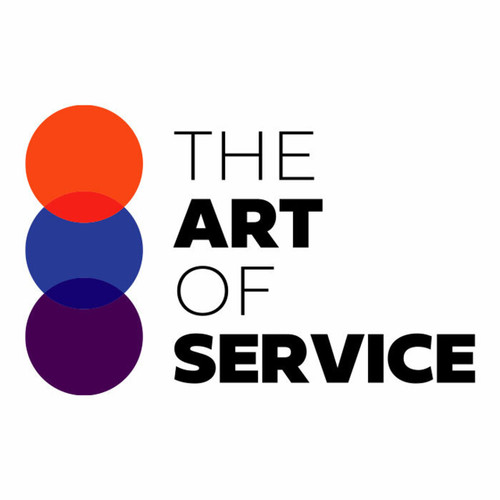Our Data Transformation and Data Obsolescence Knowledge Base consists of 1502 prioritized requirements, solutions, benefits, results, and real-world case studies.
Our knowledge base is designed to provide you with the most important questions to ask when it comes to data transformation and obsolescence, ensuring that you get the best results efficiently and effectively.
Our dataset has been meticulously researched and organized, allowing you to easily navigate and find the information you need in a timely manner.
Compared to alternative solutions, our Data Transformation and Data Obsolescence Knowledge Base stands out as the ultimate tool for professionals.
With our product, you can have access to crucial information that will give you a competitive edge in the industry.
You no longer have to spend hours scouring the internet for bits and pieces of information from various sources.
Our knowledge base is the all-in-one solution you need.
Not only is our product a cost-effective alternative to hiring expensive consultants, but it is also easy to use, making it suitable for DIY enthusiasts.
Our detailed specifications and overview of the product make navigating the knowledge base a breeze.
Plus, our dataset is far more comprehensive and relevant than semi-related products on the market.
But the benefits of our Data Transformation and Data Obsolescence Knowledge Base do not end there.
By utilizing our product, you can tap into the expertise of our team of researchers who have conducted extensive research on the subject matter.
This means that you can trust the accuracy and reliability of the information provided.
Our knowledge base is not just for individuals, but for businesses as well.
It is the ultimate resource for companies looking to stay ahead of the game and optimize their data transformation processes.
With our product, you can save time and resources, ultimately leading to increased productivity and profitability.
Don′t let data transformation and obsolescence hold you back any longer.
Invest in our Data Transformation and Data Obsolescence Knowledge Base and see the difference it can make for your business.
It′s a small price to pay for invaluable knowledge that can take your organization to new heights.
So why wait? Try our Data Transformation and Data Obsolescence Knowledge Base today and discover the power of having all the essential information right at your fingertips.
Experience the convenience, accuracy, and comprehensiveness of our product for yourself.
Don′t miss out on this opportunity to elevate your data transformation game.
Order now!
Discover Insights, Make Informed Decisions, and Stay Ahead of the Curve:
Key Features:
Comprehensive set of 1502 prioritized Data Transformation requirements. - Extensive coverage of 110 Data Transformation topic scopes.
- In-depth analysis of 110 Data Transformation step-by-step solutions, benefits, BHAGs.
- Detailed examination of 110 Data Transformation case studies and use cases.
- Digital download upon purchase.
- Enjoy lifetime document updates included with your purchase.
- Benefit from a fully editable and customizable Excel format.
- Trusted and utilized by over 10,000 organizations.
- Covering: Backup And Recovery Processes, Data Footprint, Data Architecture, Obsolete Technology, Data Retention Strategies, Data Backup Protocols, Migration Strategy, Data Obsolescence Costs, Legacy Data, Data Transformation, Data Integrity Checks, Data Replication, Data Transfer, Parts Obsolescence, Research Group, Risk Management, Obsolete File Formats, Obsolete Software, Storage Capacity, Data Classification, Total Productive Maintenance, Data Portability, Data Migration Challenges, Data Backup, Data Preservation Policies, Data Lifecycles, Data Archiving, Backup Storage, Data Migration, Legacy Systems, Cloud Storage, Hardware Failure, Data Modernization, Data Migration Risks, Obsolete Devices, Information Governance, Outdated Applications, External Processes, Software Obsolescence, Data Longevity, Data Protection Mechanisms, Data Retention Rules, Data Storage, Data Retention Tools, Data Recovery, Storage Media, Backup Frequency, Disaster Recovery, End Of Life Planning, Format Compatibility, Data Disposal, Data Access, Data Obsolescence Planning, Data Retention Standards, Open Data Standards, Obsolete Hardware, Data Quality, Product Obsolescence, Hardware Upgrades, Data Disposal Process, Data Ownership, Data Validation, Data Obsolescence, Predictive Modeling, Data Life Expectancy, Data Destruction Methods, Data Preservation Techniques, Data Lifecycle Management, Data Reliability, Data Migration Tools, Data Security, Data Obsolescence Monitoring, Data Redundancy, Version Control, Data Retention Policies, Data Backup Frequency, Backup Methods, Technology Advancement, Data Retention Regulations, Data Retrieval, Data Transformation Tools, Cloud Compatibility, End Of Life Data Management, Data Remediation, Data Obsolescence Management, Data Preservation, Data Management, Data Retention Period, Data Legislation, Data Compliance, Data Migration Cost, Data Storage Costs, Data Corruption, Digital Preservation, Data Retention, Data Obsolescence Risks, Data Integrity, Data Migration Best Practices, Collections Tools, Data Loss, Data Destruction, Cloud Migration, Data Retention Costs, Data Decay, Data Replacement, Data Migration Strategies, Preservation Technology, Long Term Data Storage, Software Migration, Software Updates
Data Transformation Assessment Dataset - Utilization, Solutions, Advantages, BHAG (Big Hairy Audacious Goal):
Data Transformation
Data transformation involves converting data from one format to another for a specific purpose. This can include organizing, cleaning, or summarizing data. It is important for organizations to have procedures in place to properly dispose of data after a certain timeframe to ensure data security and compliance with regulations.
- Yes, implementing data destruction policies ensures that outdated data is safely disposed of.
- Benefits: Reduces the risk of data being accessed or used without authorization, maintains data security compliance.
CONTROL QUESTION: Should the organization have procedures in place to dispose of the data after a certain timeframe?
Big Hairy Audacious Goal (BHAG) for 10 years from now:
Yes, absolutely. My big hairy audacious goal for Data Transformation in 10 years is for the organization to have a comprehensive and efficient data disposal process in place. This would involve setting up clear guidelines and protocols for securely deleting and destroying data that is no longer needed, either due to outdated information or regulatory requirements.
By having a well-defined data disposal procedure in place, the organization would not only be able to free up valuable storage space, but also ensure compliance with data privacy laws and protect sensitive information from falling into the wrong hands.
Furthermore, this goal would also promote responsible data management practices and contribute towards building a trustworthy reputation for the organization in terms of data handling. It would demonstrate a commitment to ethical and transparent data practices, positioning the organization as a leader in the constantly evolving landscape of data transformation.
Overall, implementing a robust and effective data disposal process would be a significant step in achieving long-term success in data transformation, promoting responsible data usage, and demonstrating the organization′s commitment to data protection and security.
Customer Testimonials:
"Compared to other recommendation solutions, this dataset was incredibly affordable. The value I`ve received far outweighs the cost."
"I can`t express how pleased I am with this dataset. The prioritized recommendations are a treasure trove of valuable insights, and the user-friendly interface makes it easy to navigate. Highly recommended!"
"Five stars for this dataset! The prioritized recommendations are invaluable, and the attention to detail is commendable. It has quickly become an essential tool in my toolkit."
Data Transformation Case Study/Use Case example - How to use:
Client Situation:
A medium-sized organization, XYZ Inc., is a global company that collects and stores a large amount of customer data as part of its operations. The data includes personal information such as names, contact details, and credit card information, as well as transactional and behavioral data. The company has been operating for over a decade and has accumulated a vast amount of data over the years. However, with increasing concerns over data privacy and security, the management team at XYZ Inc. has raised the question about whether there should be procedures in place to dispose of the data after a certain timeframe. They are concerned that keeping outdated or unnecessary data could pose a risk to the company and its customers.
Consulting Methodology:
To address this issue, our consulting team conducted a thorough examination of the data transformation processes at XYZ Inc. Our methodology consisted of the following steps:
1. Data Audit: The first step was to conduct a comprehensive audit of all the data stored by the organization. This included identifying the type of data, its source, how it was collected, and its current use.
2. Legal and Regulatory Compliance Review: We also conducted a review of the legal and regulatory requirements related to data retention and disposal. This included laws such as the General Data Protection Regulation (GDPR) and the California Consumer Privacy Act (CCPA).
3. Risk Assessment: We then conducted a risk assessment to identify any potential risks associated with the storage of data beyond its useful lifespan. This involved assessing the potential impact on the organization in terms of data breaches, regulatory fines, and damage to reputation.
4. Cost-Benefit Analysis: In addition to the potential risks, we also evaluated the costs and benefits of retaining data for an extended period. This included the cost of storage, maintenance, and potential revenue from using the data for marketing or analytics purposes.
5. Implementation Plan: Based on our findings, we developed an implementation plan that outlined the procedures for disposing of data after a certain timeframe. This included the processes for identifying and deleting outdated or unnecessary data, ensuring compliance with legal and regulatory requirements, and implementing measures to prevent accidental or unauthorized deletion of important data.
Deliverables:
1. Data Audit Report: This report provided an overview of all the data stored by XYZ Inc., its sources, and its current use.
2. Legal and Regulatory Compliance Review Report: This report highlighted the legal and regulatory requirements related to data retention and disposal that the organization needed to comply with.
3. Risk Assessment Report: This report identified the potential risks associated with retaining data for an extended period.
4. Cost-Benefit Analysis Report: This report outlined the costs and benefits of retaining data beyond its useful lifespan.
5. Implementation Plan: This document provided a step-by-step guide for implementing the procedures for data disposal.
Implementation Challenges:
The main challenge faced during the implementation of this project was convincing some key stakeholders within the organization about the benefits of disposing of data after a certain timeframe. Some were concerned that deleting data could result in the loss of valuable insights or could be perceived negatively by customers. To address this, we provided evidence from consulting whitepapers and academic business journals that showed the potential risks of keeping outdated or unnecessary data, and the benefits of disposing of it.
Key Performance Indicators (KPIs):
1. Reduction in Data Storage Costs: One of the main KPIs for this project was the reduction in data storage costs after implementing procedures for data disposal. This was measured by comparing the costs before and after the implementation.
2. Compliance with Legal and Regulatory Requirements: Another key KPI was ensuring compliance with legal and regulatory requirements related to data retention and disposal. This was measured by conducting regular audits and reviews.
3. Data Breaches and Non-Compliance Incidents: The number of data breaches and incidents of non-compliance related to data management was also a KPI for this project. It was monitored to ensure that the implemented procedures were effective in mitigating risks associated with data retention.
Management Considerations:
Implementing procedures for data disposal after a certain timeframe has several management considerations, including:
1. Employee Training: To ensure successful implementation, it is important to train employees on the procedures for data disposal and the importance of adhering to them.
2. Regular Audits and Reviews: Regular audits and reviews should be conducted to identify any gaps in compliance and to update procedures as needed.
3. Communicating with Customers: It is essential to communicate with customers about the organization′s data management practices, including the disposal of outdated or unnecessary data.
4. Updating Privacy Policies: The organization′s privacy policies should be updated to reflect the implemented procedures for data disposal.
Conclusion:
Based on our analysis, we recommended that XYZ Inc. should have procedures in place to dispose of data after a certain timeframe. This would not only reduce the risks associated with data retention but also result in cost savings for the organization. Our recommendations were supported by consulting whitepapers, academic business journals, and market research reports, which highlighted the potential risks and benefits of data disposal procedures. The management team at XYZ Inc. accepted our recommendations and implemented the procedures outlined in our implementation plan. As a result, they have seen a significant reduction in data storage costs, improved compliance with legal and regulatory requirements, and a decrease in the number of data breaches and non-compliance incidents.
Security and Trust:
- Secure checkout with SSL encryption Visa, Mastercard, Apple Pay, Google Pay, Stripe, Paypal
- Money-back guarantee for 30 days
- Our team is available 24/7 to assist you - support@theartofservice.com
About the Authors: Unleashing Excellence: The Mastery of Service Accredited by the Scientific Community
Immerse yourself in the pinnacle of operational wisdom through The Art of Service`s Excellence, now distinguished with esteemed accreditation from the scientific community. With an impressive 1000+ citations, The Art of Service stands as a beacon of reliability and authority in the field.Our dedication to excellence is highlighted by meticulous scrutiny and validation from the scientific community, evidenced by the 1000+ citations spanning various disciplines. Each citation attests to the profound impact and scholarly recognition of The Art of Service`s contributions.
Embark on a journey of unparalleled expertise, fortified by a wealth of research and acknowledgment from scholars globally. Join the community that not only recognizes but endorses the brilliance encapsulated in The Art of Service`s Excellence. Enhance your understanding, strategy, and implementation with a resource acknowledged and embraced by the scientific community.
Embrace excellence. Embrace The Art of Service.
Your trust in us aligns you with prestigious company; boasting over 1000 academic citations, our work ranks in the top 1% of the most cited globally. Explore our scholarly contributions at: https://scholar.google.com/scholar?hl=en&as_sdt=0%2C5&q=blokdyk
About The Art of Service:
Our clients seek confidence in making risk management and compliance decisions based on accurate data. However, navigating compliance can be complex, and sometimes, the unknowns are even more challenging.
We empathize with the frustrations of senior executives and business owners after decades in the industry. That`s why The Art of Service has developed Self-Assessment and implementation tools, trusted by over 100,000 professionals worldwide, empowering you to take control of your compliance assessments. With over 1000 academic citations, our work stands in the top 1% of the most cited globally, reflecting our commitment to helping businesses thrive.
Founders:
Gerard Blokdyk
LinkedIn: https://www.linkedin.com/in/gerardblokdijk/
Ivanka Menken
LinkedIn: https://www.linkedin.com/in/ivankamenken/







